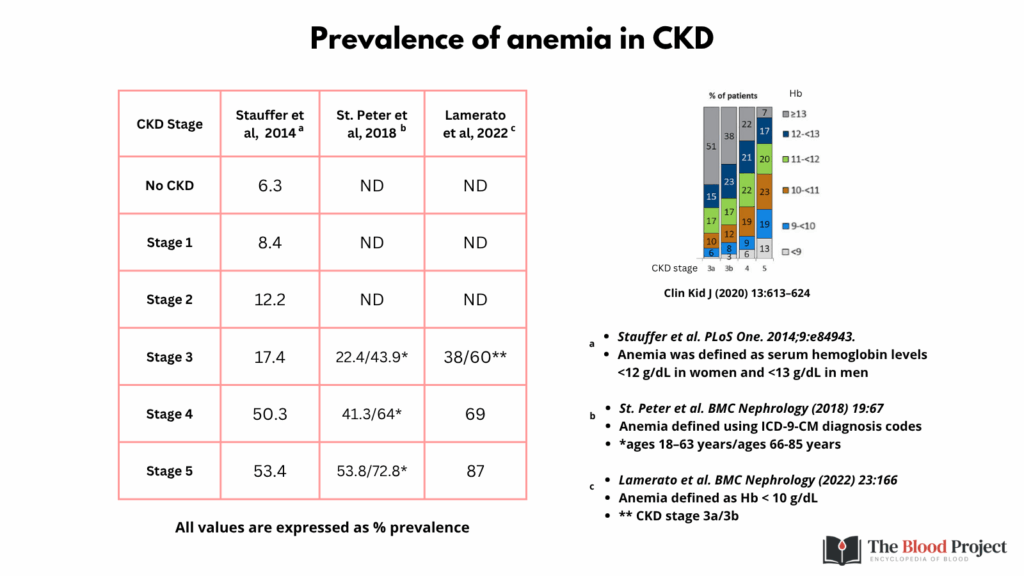
- Anemia is a common and progressive complication of chronic kidney disease (CKD), with prevalence and severity increasing in a stepwise fashion as glomerular filtration rate (GFR) declines.
- While there is a strong association, the degree of anemia cannot be predicted with complete accuracy based solely on the degree of renal failure. Individual patient assessment remains essential. The degree of anemia at a given level of renal dysfunction can vary due to factors such as age, sex, race, diabetes, iron status, inflammation, and center-specific management practices.
- In the United States, population-based data show that anemia affects approximately 8–15% of patients with early-stage CKD (stages 1–2), rising to over 50% in advanced CKD (stage 5).
- According to the Kidney Disease: Improving Global Outcomes (KDIGO) guidelines, the prevalence of anemia exceeds 50% in CKD stages G4–G5, and is higher in:
- Women
- Older adults
- Black individuals
- The risk of anemia is strongly associated with:
- Lower eGFR
- Diabetes
- Female sex
- History of hemodialysis.
- The pathogenesis is multifactorial, with relative erythropoietin deficiency, iron deficiency, chronic inflammation, and shortened red cell survival as key contributors.

